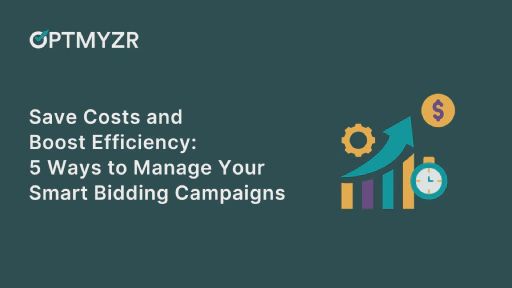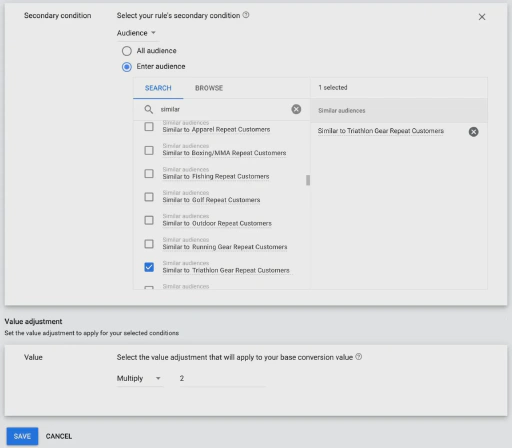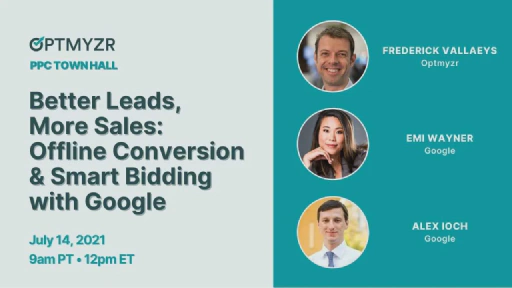Machine Learning (ML), Artificial Intelligence (AI) and Automation are three trending topics in the industry today. It’s an accepted fact that automation is here to stay so it’s our job to learn how to make the most of it for our PPC accounts. In my book “Digital Marketing in an AI World”, I explain that one of the roles humans will have to play when their old job has been automated is that of the “PPC Doctor”: someone who knows the right medicine for their patient and who also understands potentially dangerous interactions. This post covers one such interaction that can lead to disastrous results in PPC.
We’re talking here about Google Ads’ smart bidding strategies. Even though they’re designed to help advertisers reach a determined goal, they lack the human intuition for understanding how to deal with gray areas, and are prone to bad decisions when they’re fed bad data. Specifically, they can do major damage to accounts that are using last-click attribution (LCA) models.
Understanding Last-Click Attribution Model
Last-Click is one of the 6 different attribution models offered by Google Ads. It gives all the credit to the ad and keyword which was last clicked before a conversion.
For example, let’s say you are advertising athletic shoes. There’s a sequence of queries done by a user that goes something like this: “Sneakers” > “Running Shoes” > “Adidas Running Shoes” and finally they search for “Ultraboost 19”. This is just a simple example to illustrate that users tend to start with broad queries and get more specific as they get to understand what it is they might want to buy.
If your campaign is using the Last-Click attribution (LCA) model, then all the credit for the conversion will be given to the ad shown for the final query: “Ultraboost 19”, and no credit will be given to any of the queries that preceded it.
Conversion Funnels and LCA
So why is this so bad? When you give all the credit to the last-clicked ad/keyword, it’s like saying you don’t think there was any value to all the queries along the way that helped the user become aware and familiar with your offering. You’re assuming the user would have discovered to search for “Ultraboost 19” without having been exposed to any of your other ads. This is generally a false assumption, especially for consumers who are not very familiar with your brand and its latest offerings.
Consumers today have more interactions than ever before with brands while researching what to buy. Brands that are not present at the earlier stages of a user’s discovery process may not be in contention to win their business later down the line.
So using last-click attribution would mean that “Sneakers”, “Running Shoes” or “Adidas Running Shoes” are assigned no value.
Attribution Models Inform Optimizations
Why is it so important to assign the correct value? Doesn’t the attribution model just change the numbers in reports? The answer is ‘no,’ the attribution model populates the conversion and conversion value metrics and most account managers rely on these to decide where to allocate their budgets, where to change bids, what queries to add as keywords, and what negative keywords to add.
This could all be okay if a human was managing all this manually. For example, while the lack of conversions for a keyword like ‘sneakers’ might normally be grounds for a bid reduction, an account manager would likely realize that they’d still want to bid for this keyword. Human judgment would win out over purely following some logical rules and the account might do fine.
But like I said before, automation is increasingly doing more of the day-to-day account management and it lacks the human judgment that averted disaster in this scenario of an advertiser using last-click attribution.
Smart Bidding + Last-Click Attribution
When last-click attribution is being used, the keywords “Sneakers”, “Running Shoes” or “Adidas Running Shoes” from the example above, will be reported as non-converting, although they are still valuable keywords because they help consumers unfamiliar with your brand discover your brand’s offerings as they do their research.
Now here’s where results can get really bad… by combining bid automation with last-click attribution. The job of automated bidding, like target CPA (tCPA) or target ROAS (tROAS) bidding from Google, is to calculate the appropriate CPC that is needed for the ad to enter the auction.
The ‘right’ CPC is determined one of two ways:
- For tCPA, Google uses the predicted conversion rate to calculate CPC
- For tROAS, Google uses the predicted conversion value for a click to set the CPC
But if the attribution model hasn’t been assigning conversions to upper-funnel searches, it will predict that conversion rate will be low and that the value per click will be low. So now the automated bidding system will start to reduce bids for these upper funnel keywords. And eventually bids will get so low that the ads may stop showing altogether.
This is bad because it means you’re reducing the volume of prospects who will be exposed to your brand at earlier stages. Eventually your funnel just dries up and the only sales you’re left with are those from people who already knew your brand and products very well — the people who knew to search for “Ultraboost 19”.
Final Thoughts
Considering the significant risk of making bad decisions for the reasons explained above, we advise all our customers to switch away from using Last-Click attribution. If anything, simply switch to a time-decay model which is most similar to last-click while still giving some value to all stages of the funnel.
When it comes to automations like smart bidding strategies, or automated bids using another platform, knowing how they interact with your measurement systems is an absolute must if you want to avert an account blowup.









